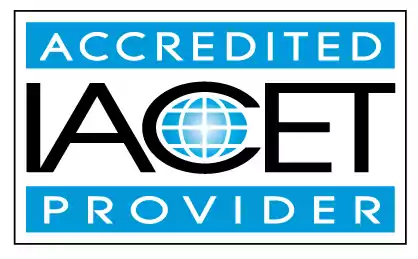Identify strategies and practices for preventing shaken baby syndrome and abusive head trauma in the child care setting
Prevent shaken baby syndrome and abusive head trauma in child care settings. Learn about the requirements of Child Care Subsidy (POC), Child and Adult Food Program, MSDE Child Care Credential, Tiered Reimbursement, and the Child Care Career and Professional Development Fund. Discover strategies and practices to ensure safety in early childhood education and child care centers.Trainings incorporating this outcome
CDA Subject Areas
Proficiency Level
States
Alabama (1) Alaska (1) Alberta (1) Arizona (1) Arkansas (1) Australia (1) California (1) Colorado (1) Connecticut (1) Delaware (1) District of Columbia (1) Florida (1) Georgia (1) Hawaii (1) Idaho (1) Indiana (1) Kansas (1) Kentucky (1) Louisiana (1) Maine (1) Massachusetts (1) Michigan (1) Mississippi (1) Montana (1) Nevada (1) New Hampshire (1) New Jersey (1) New Mexico (1) Newfoundland and Labrador (1) North Dakota (1) Nova Scotia (1) Ohio (1) Oklahoma (1) Prince Edward Island (1) Quebec (1) Rhode Island (1) Saskatchewan (1) South Dakota (1) Texas (1) Utah (1) Vermont (1) Virgin Islands (1) Virginia (1) Washington (1) West Virginia (1) Wisconsin (1) Wyoming (1)
24 hours courses
1 hours courses
Related Outcomes
- Identify strategies for the child care provider that will promote successful child development. Identify strategies for working with children with special needs
- Recognize the signs and prevention of shaken baby syndrome and abusive head trauma.
- Identify appropriate practice for the identification, prevention, and treatment of communicable diseases and illnesses in child care setting
- Define shaken baby syndrome and abusive head trauma
- Identify strategies for the child care provider that will promote successful child development.
- Identify appropriate practices communicable diseases/illnesses and immunizations and their schedules in child care setting
- Identify strategies for the child care provider that will promote successful child development.
- Identify strategies for the child care provider that will promote successful child development
- Identify safe practices with infants including SIDS, Abusive Head Trauma, and SBS.
- Identify responses to typical daily child care scenarios with solutions that are aligned with Child Care Regulations
- Demonstrate how to develop strategies for involving parents in the child care setting
- Identify types of abuse, by identifying signs of abuse and neglect
- Demonstrate understanding of inclusionary practices for conduct disorder in the child care setting.
- Demonstrate understanding of strategies that utilize good time management practices for teachers and child care providers.
- Demonstrate understanding of inclusionary practices for autism spectrum disorder in the child care setting.
- Demonstrate understanding of inclusionary practices for ADHD in the child care setting.
- Identify the importance of professional development for child care professionals and strategies to make meaningful choices.
- Identify factors that may influence learning for a child in the family child care environment.
- Demonstrate understanding of inclusionary practices for cerebral palsy in the child care setting.
- Demonstrate understanding of inclusionary practices for anxiety in the child care setting.
Related Articles
- UNITED STATES OF AMERICA - Nevada
- Play it Safe New Hampshire
- Need Annual Training Hours Texas?
- Texas 24 Hour Pre-Service Training for Child-Care Workers
- Start your early childhood educator career today!
- Health and Safety requirements
- TX Reduced Price for Pre-Service Training!
- Nevada Registry
- Federal Health and Safety requirements
- Focus on Health and Safety Training
- Understanding Shaken Baby Syndrome and Abusive Head Trauma: Crucial Training for Child Care Providers
- CDA Subject Area 1 Training: A Targeted Approach to Early Childhood Education
- Is the 90-Hour Childcare Certification Really Worth It?
- From Passion to Profession: Your Path to Becoming a Childcare Teacher in Connecticut
- How Can New Texas Educators Build a Strong Foundation with Pre-Service Training?
- What Must Maryland Child Care Providers Know to Keep Children Safe?
- Child Care Licensing and Regulations in Michigan
- 🚀How Can New Staff Quickly Get Oriented to North Dakota’s Childcare Standards?
- 👶 New to Illinois Childcare? Here Are the Mandatory Training Topics You Must Know! 📚
 2.4 CEUs
2.4 CEUs